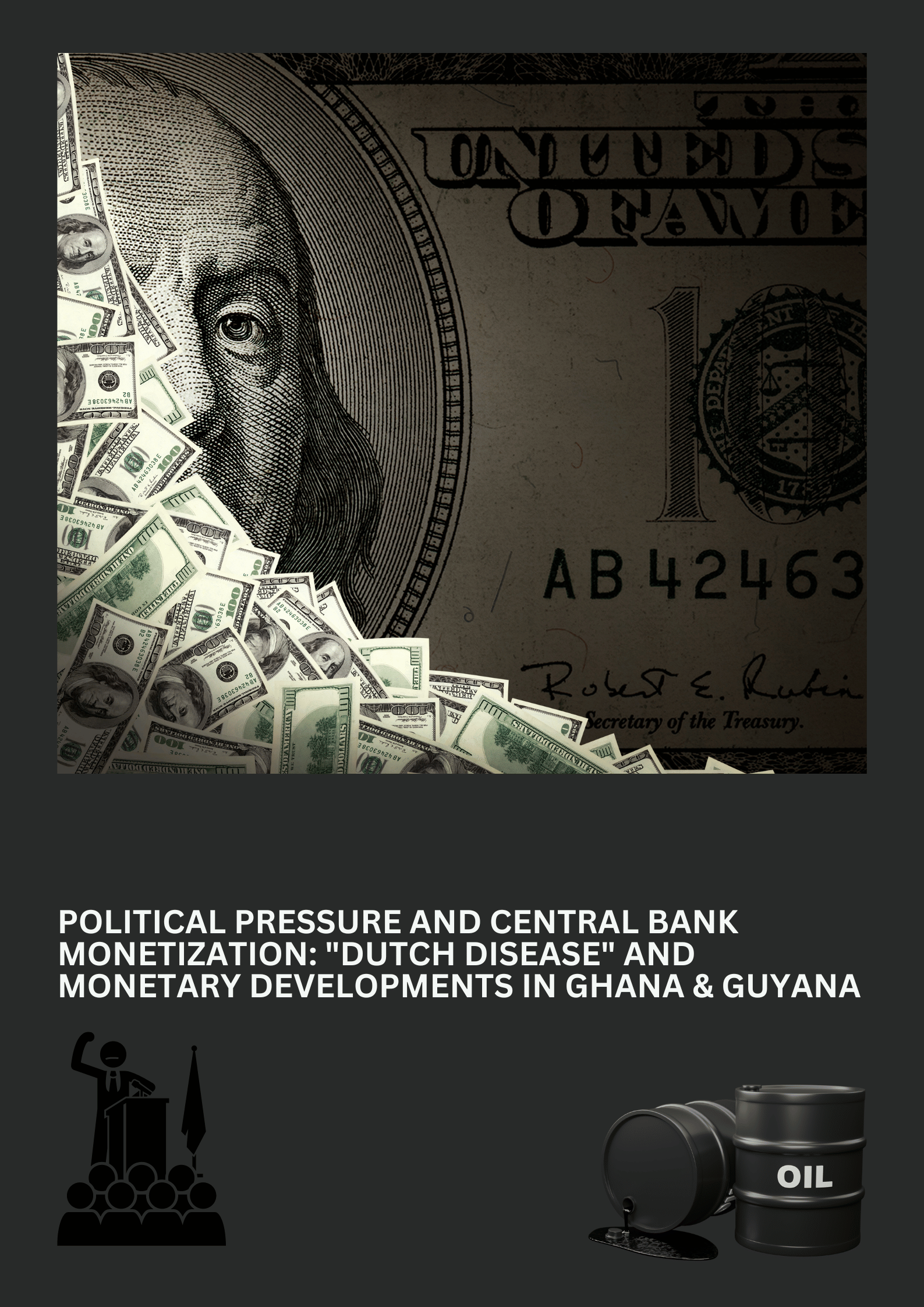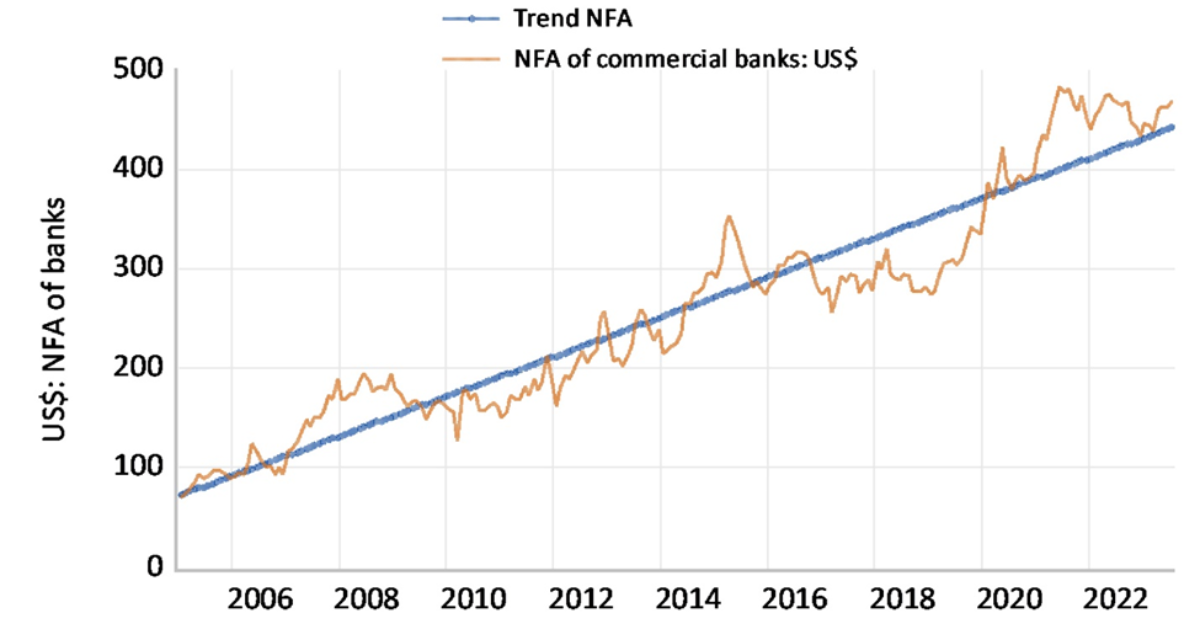A vigorous debate is ongoing regarding the operationalisation of the Natural Resource Fund (NRF). In his last Stabroek News column, Mr Christopher Ram cites legal reasons why the NRF Act is not in operation. He also raises the possibility that the government may not want to operationalise the existing Act since it was passed in a lame-duck session of Parliament. Furthermore, he argues that there is no legal framework for placing the incoming royalties and profit share in the Federal Reserve Bank of New York.
In my opinion the existing NRF Act is a good starting point and as a matter of good will, President Ali should start the Fund’s operation on that basis, in spite of the fact that the Act was introduced by APNU+AFC. The present administration could make modifications, but there is little that they can do to improve on the existing legal framework. Any future modification would most likely take the NRF closer to a Kazakhstan-type model, an outcome that has at least a 50% chance it will not turn out well for Guyana in the long term.
In addition, the present legislation does allow for larger upfront withdrawals. However, the large early deductions will depend on the rate of production, which is likely to continue increasing until 2030. It also depends on the long-term investment return on the Fund, as well as sector-specific growth rates in manufacturing, technology and agriculture.
Larger upfront withdrawals must be accompanied with greater oversight that curtail the discretion of two or three persons. The withdrawals can still be made in the context of an optimal rule known as the Fiscally Sustainable Amount (FSA), which is already implied by the current legislation. Since the spending is done through the budget process, the existing framework allows for parliamentary debates and oversight.
Moreover, the current legal framework requires that the optimal rule be determined by the macroeconomic committee. This does not mean the macroeconomic committee has any real political power. It is merely tasked with determining what’s the largest possible sustainable withdrawal that is necessary for supporting the budgetary process. It is the task of a competent and enlightened Parliament to determine how best to spend this money, not the macroeconomic committee.
Suffice to say, however, I can tell you as a macroeconomist myself that it is impossible to figure out the FSA – including any larger early withdrawal devoid of gut feelings and emotions – without the monthly production data. This is a primary reason why I raised this matter in the previous Business Review column. If the committee members cannot figure out how much money is due to the government, how are they going to know the FSA?
President Ali recently noted that the monthly production data will be made available once the government establishes a website. I have to say there has been a noticeable improvement in the website of the Bureau of Statistics in recent months. The Bureau is indeed the entity legally charged with knowing the monthly oil production data, as it must calculate the nation’s GDP. As noted in the previous column, the Bureau has the capacity to just upload the data on its existing website. Are ExxonMobil and partners not supplying the data? Or did the government make a choice not to provide the data? The Ministry of Finance and the Bank of Guyana will also be flying blind without the monthly production data.
I, however, accept that the PPP/C government was preoccupied with major crises in its first year. It came into power in the midst of a global pandemic. The flood has set back many farms and families by destroying property and income. The government is also preoccupied with GECOM, a political disaster in the making once this continues to drag on close to the next election. President Ali would want to get the next population census done as soon as possible in order to facilitate a credible voters list. Given these pressing events, it is clear that operationalising the Fund under the current legal framework makes sense.
Furthermore, the PPP/C government has demonstrated it can propose massive projects without needing to turn to the money already in the Federal Reserve account. It is proposing the build-and-operate financing model for Amaila. The same financing model was noted in relation to the proposed high-span bridge over the Demerara River. ExxonMobil and partners will upfront the cost for laying the gas pipe lines. The approximate US$900 million, associated fees and interest will be recovered by the oil producer as cost oil. It means that the 75% cost recovery formula will be in place for a longer period and applied across different wells.
A quick digression is in order here: a matter for any contract renegotiation should consider a tweak from 75% to 50% cost recovery cap. Such a tweak in the production sharing agreement will greatly increase the amount of funds going to government much earlier in the production cycle.
Finally, how much has the country lost in interest income and capital gains by not operationalising the NRF, part of which also involves hiring a skilled investment manager? Consider the following table that indicates all the deposits into the account up to May 2021. It was reported recently that there was another deposit of profit oil in July. However, the analysis that follows does not include the recent deposit of almost US$80 million.
The table indicates the month of deposit, thereby allowing for calculating lost income had the money been invested in a balanced portfolio of bonds, stocks and real estate funds. Usually, such an investment portfolio involves fees or transaction costs. Even with fees, however, the return could be much higher than the 0.1% that the funds earn in the present account.
One misconception I observed by some commenters on Stabroek News (and elsewhere) is the notion that investors buy bonds for the current yield which is very low these days. The fact is, bonds are bought for their capital gains, not just current yield. The task of an investment manager is to time the markets in order to determine the highest capital gains on bonds, as well as stocks and other asset classes.
Accounting for fees, I feel that a low baseline return could have been 3% per year. Considering the months of deposit and monthly compounding until August 2021, I calculate that the account would have earned a return of US$7.832 million.
However, I feel that a 5% rate of return per annum, after accounting for fees and average risk, on a diversified portfolio is more reasonable. As a matter of fact, I believe it is a more realistic long-term baseline instead of 3%. At the 5% baseline, again assuming monthly compounding, Guyana lost US$13.173 million up to August 2021.
In conclusion, each day the government procrastinates means the country’s loss expands beyond US$13.173 million. By end of 2021, this loss – by choice – would easily exceed US$20 million – the amount of the infamous signing bonus. This extra income from capital gains and dividends could go a long way towards building a modern highway from Diamond to Mandela Avenue.
Dr Tarron Khemraj
Comments can be sent to: tkhemraj@ncf.edu










